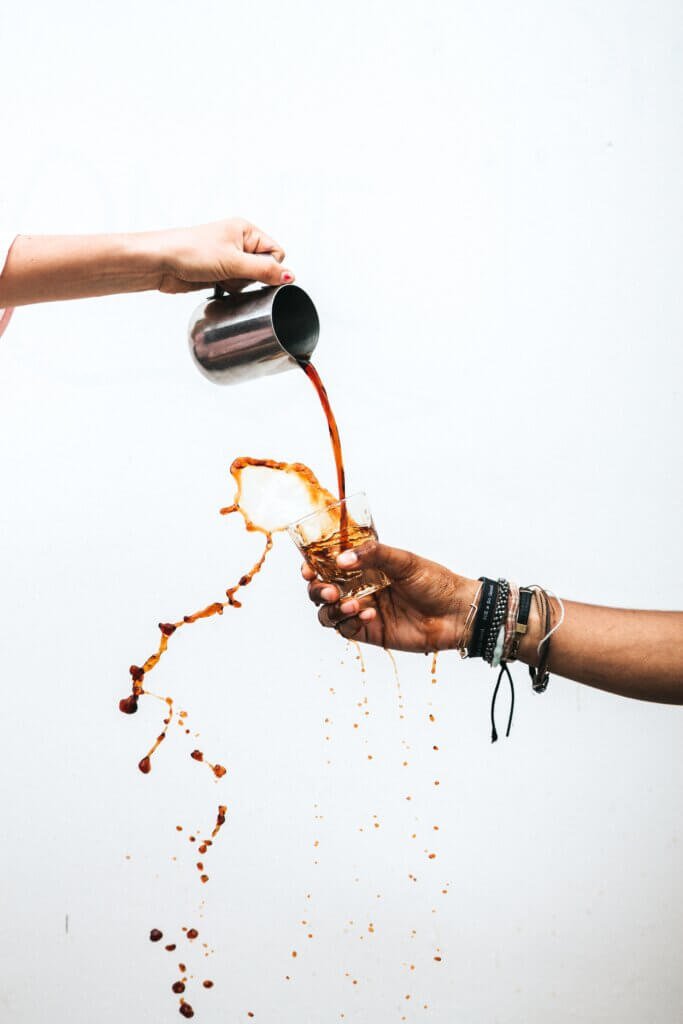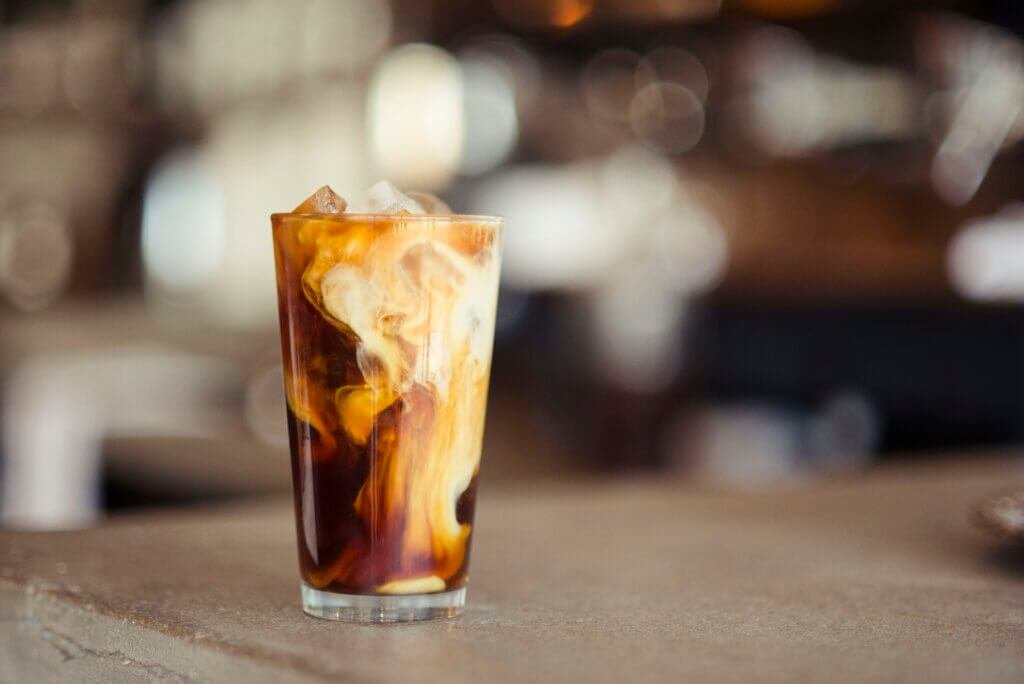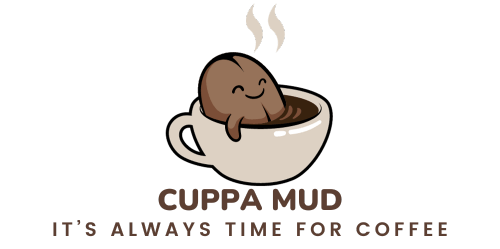Imagine walking into a bustling café, the aroma of freshly brewed coffee filling the air. As you gaze at the menu board, you can’t help but wonder, “What coffee sells the most?” With countless options to choose from, it’s natural to be curious about which coffee reigns supreme in popularity. In this article, we will explore the world of coffee and uncover the answer to this burning question. So grab your favorite mug, settle in, and prepare to uncover the secret to the most sought-after cup of joe.

Types of Coffee
Arabica
Arabica coffee is the most popular and widely consumed coffee variety in the world. Known for its delicate flavor notes and pleasant aroma, Arabica is favored by many coffee enthusiasts. It is grown at high altitudes in regions such as Latin America, Africa, and Asia-Pacific. Arabica coffee beans have a higher acidity and lower caffeine content compared to other varieties, making them perfect for those looking for a smooth and mild cup of coffee.
Robusta
Robusta coffee is the second most commonly consumed coffee variety globally. Grown in regions with lower altitudes, such as Africa and Asia, Robusta beans are known for their strong and bitter taste. They have a higher caffeine content and are often used in blends or for making espresso. Robusta coffee is valued for its affordability and its ability to provide a stronger and more intense flavor profile.
Blended Coffee
Blended coffee is a combination of Arabica and Robusta beans, carefully mixed to create a unique flavor profile. Blending allows coffee producers to balance the characteristics of different coffee varieties, resulting in a more well-rounded and complex taste. Blends can cater to various preferences and are often used in commercial coffee products. They offer a balance between the delicate flavors of Arabica and the boldness of Robusta.
Flavored Coffee
Flavored coffee has gained popularity in recent years, offering a wide range of exciting and unique taste experiences. This type of coffee is infused with different flavors like vanilla, caramel, chocolate, or various fruits. Flavored coffees can be made using either Arabica or Robusta beans, and the flavors can be added during the roasting process or through flavored syrups. These coffees provide a delightful twist to the traditional coffee taste and cater to those with a sweet tooth or a desire for variety in their coffee drinking experience.
Coffee Regions
Latin America
Latin America is known for producing some of the finest Arabica coffees in the world. Countries like Colombia, Brazil, Costa Rica, and Guatemala are renowned for their high-quality coffee beans. The region’s favorable climate, rich volcanic soil, and high altitude contribute to the unique flavor profiles found in Latin American coffees. These coffees often have a brighter acidity, medium body, and a wide range of flavor notes, from fruity to chocolaty.
Africa
Africa is a significant coffee-producing region, known for its diverse coffee flavors and profiles. Countries like Ethiopia, Kenya, and Uganda are known for their outstanding Arabica coffees. Ethiopian coffee, in particular, is highly regarded worldwide and is often associated with unique and distinct flavor profiles. African coffees are known for their fruitiness, floral notes, and wine-like acidity. The continent’s coffee-growing regions benefit from a combination of high altitudes, ample rainfall, and fertile soil.
Asia-Pacific
The Asia-Pacific region, including countries like Indonesia, Vietnam, and India, has a long-standing tradition of coffee production. While the region is known for its robusta coffees, it also produces some excellent arabica varieties. Indonesian coffee, such as Sumatra and Java, offers earthy and spicy flavors with a full-bodied profile. Vietnamese coffee, often brewed in a unique drip filter, is famous for its strong and bold taste. The Asia-Pacific region’s coffee-growing conditions, including its tropical climate and volcanic soil, contribute to the unique flavors found in these coffees.
Others
Apart from the major coffee regions of Latin America, Africa, and the Asia-Pacific, there are also notable coffee-producing countries in other parts of the world. For instance, Hawaii in the United States is known for its Kona coffee, which has a smooth and mellow flavor. Jamaica produces the renowned Blue Mountain coffee, valued for its mild taste and delightful aroma. Other countries such as Peru, Honduras, and Guatemala also contribute to the global coffee industry, each offering their own distinctive coffee characteristics and flavors.

Popular Coffee Beverages
Espresso
Espresso is the foundation of numerous coffee-based beverages and is beloved by coffee enthusiasts worldwide. It is brewed by forcing a small amount of hot water through finely ground coffee beans under high pressure. Espresso is renowned for its full-bodied flavor, rich crema, and concentrated caffeine content. It serves as the base for other popular coffee drinks such as cappuccino, latte, and mocha.
Cappuccino
Cappuccino is a classic Italian coffee beverage that combines espresso, steamed milk, and a layer of frothed milk. It is often sprinkled with cocoa or cinnamon for added flavor and presentation. The balanced combination of espresso and velvety milk foam creates a creamy and indulgent texture. Cappuccinos are typically served in smaller cups and are enjoyed throughout the day.
Latte
Latte, short for caffè latte, is a popular coffee drink made with espresso and steamed milk. It has a higher ratio of milk to coffee compared to a cappuccino, resulting in a milder and creamier flavor. Latte art, where intricate designs are created on the milk surface, has become an art form and adds a visually appealing element to the drink. It is often enjoyed as a morning or afternoon pick-me-up.
Mocha
Mocha, also known as a café mocha, is a delightful beverage that combines the flavors of espresso, steamed milk, and chocolate. It is often topped with whipped cream and chocolate shavings for added sweetness and presentation. Mochas appeal to those who enjoy the combination of coffee and chocolate, offering a rich and indulgent flavor profile.
Americano
An Americano is a simple yet satisfying coffee drink made by diluting one or more shots of espresso with hot water. It is the perfect option for those who prefer a milder coffee taste or a larger volume of drink. Americanos provide a smoother flavor profile while still maintaining the rich and distinct characteristics of espresso.
Cold Brew
Cold brew coffee has gained significant popularity in recent years, particularly during warmer months. It is made by steeping coarse coffee grounds in cold water for an extended period, usually overnight. The resulting coffee extract is less acidic and smoother compared to conventional hot-brewed coffee. Cold brew is often served over ice, making it a refreshing and thirst-quenching choice for coffee lovers.
Iced Coffee
Iced coffee refers to any type of coffee that is brewed hot and then cooled down before being poured over ice. It can be made using various brewing methods, including espresso, drip brewing, or even instant coffee. Iced coffee is a popular choice during hot weather and offers a refreshing and chilled coffee experience.
Global Coffee Consumption
Major Consumers
Coffee consumption is prevalent worldwide, with some countries showing a particularly high demand for this beloved beverage. The major consumers of coffee include the United States, Brazil, Germany, Japan, France, Italy, China, the United Kingdom, Canada, and Spain. These countries have a rich coffee culture and a significant proportion of their population actively engaging in coffee consumption.
Trends in Coffee Consumption
In recent years, there have been several noteworthy trends in coffee consumption. One of the prominent trends is the increasing preference for specialty and gourmet coffee. Consumers are becoming more discerning about the taste and quality of their coffee, seeking unique flavor profiles and higher-quality beans. There is also a growing interest in ethically sourced and sustainable coffee, with consumers supporting brands that prioritize fair trade practices and environmental considerations.
Furthermore, convenience plays a significant role in coffee consumption trends. The rise of single-serve coffee pods, such as those used in coffee machines like Keurig, has made it easier for individuals to enjoy café-quality coffee at home or at the office. Ready-to-drink coffee beverages, such as bottled iced coffee or coffee-based energy drinks, have also gained popularity among consumers looking for on-the-go options.
Factors Influencing Consumption
Several factors influence coffee consumption patterns globally. Taste and quality are key drivers, as individuals seek a pleasurable and flavorful coffee experience. Brand reputation and trustworthiness play a role in consumer choices, with established coffee brands often preferred for their consistency and reliability.
Pricing also affects consumption, as coffee can vary significantly in cost depending on factors such as bean origin, processing methods, and brand positioning. Consumers may make choices based on their budget and willingness to indulge in higher-priced specialty coffee or opt for more affordable options.
Convenience is another influential factor, with many individuals seeking coffee that can be easily prepared at home or purchased quickly while on the go. This has led to the growth of coffee pods, ready-to-drink products, and the availability of coffee in various retail locations.
Advertising and marketing efforts by coffee brands also impact consumption trends. Effective promotions and campaigns can create brand awareness, increase product visibility, and influence consumer preferences. Social and cultural factors, such as coffee traditions and rituals, also contribute to the overall coffee consumption patterns in different regions.
Additionally, the perception of coffee as a healthy beverage and its potential health benefits, such as antioxidants and improved mental alertness, play a role in its consumption. Awareness of these potential benefits may influence individuals to incorporate coffee into their daily routines.

Coffee Sales Channels
Coffee Shops
Coffee shops have become a hub for coffee enthusiasts, offering a variety of coffee beverages and a cozy atmosphere for socializing or work. These establishments serve as a reliable source of freshly brewed coffee, expertly made by baristas with a passion for the craft. Coffee shops often provide a range of brewing methods, specialty coffees, and unique flavor combinations, catering to diverse tastes and preferences.
Supermarkets
Supermarkets play a crucial role in the retail distribution of coffee, offering a wide selection of coffee brands and varieties. They provide convenience and accessibility, allowing consumers to purchase coffee alongside their regular grocery shopping. Supermarkets typically carry a mix of mainstream brands, specialty coffees, and different packaging options, such as whole bean, ground, and instant coffee.
Online Retail
The rise of e-commerce has transformed the coffee retail landscape, allowing consumers to purchase coffee conveniently from the comfort of their homes. Online retailers offer an extensive range of coffee options, including specialty coffees from around the world. They often provide in-depth product descriptions, reviews, and recommendations, enabling shoppers to explore different flavors and make informed choices. Online retailers may also offer subscription services, delivering coffee directly to customers’ doorsteps on a regular basis.
Other Sales Channels
Coffee is also sold through various other sales channels, such as convenience stores, specialty food stores, and even vending machines. These channels offer additional options for consumers who seek convenience or have specific preferences. For example, vending machines can be found in office buildings, train stations, and airports, providing quick and accessible coffee solutions for people on the go.
Top Coffee-Consuming Countries
United States
The United States is one of the largest consumers of coffee globally. With a strong coffee culture and a wide variety of coffee options available, it’s no surprise that Americans consume significant amounts of coffee. Coffee is enjoyed throughout the day, with popular beverages including drip coffee, espresso-based drinks, and iced coffee. The presence of numerous coffee shop chains, local independent cafes, and the availability of coffee in various retail locations contribute to the country’s high coffee consumption.
Brazil
As one of the world’s largest coffee producers, Brazil also sees high levels of coffee consumption within its own borders. Coffee is deeply embedded in Brazilian culture, with a strong preference for fresh and robust coffee. Traditional preparation methods like the popular “cafezinho” (strong black coffee) are enjoyed by Brazilians throughout the day. Brazil’s domestic coffee consumption is fueled by its vast production and an appreciation for the rich flavors of Brazilian coffee.
Germany
Germany has a long-standing coffee culture and is known for its love of coffee. Germans enjoy a wide range of coffee beverages, from classic drip coffee to specialty drinks like espresso and cappuccino. Coffee consumption in Germany often includes indulgent treats such as cake or pastry, with coffeehouses and cafés serving as popular gathering places for socializing or relaxation.
Japan
Japan has a vibrant and unique coffee culture, influenced by both traditional Japanese tea ceremonies and Western coffee traditions. The country’s coffee industry has seen significant growth, with a strong emphasis on specialty coffee and meticulous brewing methods. Japanese coffee shops are known for their attention to detail, exceptional presentation, and the use of high-quality beans. The popularity of pour-over coffee, where water is poured over coffee grounds manually, has contributed to Japan’s coffee culture becoming highly regarded globally.
France
Coffee holds a special place in French culture, where it is often enjoyed alongside a croissant or other pastries. France is known for its café culture, with picturesque sidewalk cafés and bistros offering opportunities to savor a cup of coffee while people-watching. Traditional French coffee preparations include café au lait (coffee with hot milk) and café crème (espresso with a dollop of steamed milk). France’s appreciation for coffee rituals and high standards of quality contribute to its coffee consumption patterns.
Italy
Italy is renowned as the birthplace of espresso and has a strong coffee culture that has influenced coffee consumption worldwide. Italians value the art of coffee making and the social aspect of enjoying a cup of espresso at a local café. Italian coffee culture revolves around the concept of “caffè,” a small serving of espresso that is consumed quickly while standing at the bar. Italy’s coffee consumption is deeply rooted in tradition and the pursuit of espresso perfection.
China
Coffee consumption in China has experienced tremendous growth in recent years, driven by urbanization, rising middle-class incomes, and increased exposure to Western culture. Chinese consumers have shown an interest in coffee’s perceived sophistication, with specialty coffee shops and international coffee chains gaining popularity in major cities. While traditional Chinese tea culture remains dominant, coffee’s rise as a trendy beverage has contributed to China’s emergence as a significant coffee market.
United Kingdom
The United Kingdom has a long history of coffee consumption, with coffeehouses playing a crucial role in the country’s social and intellectual development. Coffee remains a popular beverage choice, with Brits enjoying a variety of coffee drinks such as traditional black coffee, espresso-based beverages, and iced coffee. The presence of international coffee chains, independent coffee shops, and the availability of coffee in supermarkets contribute to the UK’s coffee consumption trends.
Canada
Canadians have a strong affinity for coffee, with a coffee culture influenced by both European traditions and North American coffee preferences. Canadians enjoy a diverse range of coffee beverages, including classic drip coffee, espresso, and specialty drinks like lattes and cappuccinos. Coffeehouses and local cafes are popular gathering places, while drive-thru coffee shops have gained prominence due to their convenience. Canada’s coffee consumption reflects a mix of both home brewing and on-the-go coffee culture.
Spain
Coffee holds a special place in Spanish culture, where it is often enjoyed as part of daily rituals and social gatherings. Spaniards cherish their coffee breaks, known as “la hora del café,” where they take time to savor a cup of coffee and engage in conversation. Classic Spanish coffee beverages include café con leche (coffee with steamed milk) and cortado (espresso with a small amount of milk). Spain’s coffee consumption is deeply rooted in its rich culinary traditions and appreciation for coffee as a pleasure to be enjoyed.

Best-Selling Coffee Brands
Nescafe
Nescafe, a brand owned by Nestle, is one of the most popular and widely recognized coffee brands worldwide. Offering a range of coffee products, including instant coffee, ground coffee, and coffee capsules compatible with Nespresso machines, Nescafe caters to various consumer preferences. Its emphasis on convenience, consistent quality, and a wide distribution network contribute to its success and appeal to coffee drinkers globally.
Starbucks
Starbucks is an iconic global coffee brand known for its premium coffee offerings, inviting store ambiance, and vast menu of beverages. With coffee shops in numerous countries, Starbucks has built a loyal customer base through its commitment to high-quality Arabica coffee, unique drink creations, and customer service. The brand’s popularity and wide range of coffee products contribute to its standing as one of the best-selling coffee brands worldwide.
Folgers
Folgers, owned by the J.M. Smucker Company, is a leading coffee brand in the United States. Renowned for its classic coffee taste and accessible pricing, Folgers appeals to a wide range of coffee consumers. Whether in the form of ground coffee, instant coffee, or coffee pods, Folgers has maintained a strong presence in the American market for many years.
McDonald’s McCafe
McCafe, the coffee brand associated with McDonald’s, has gained popularity as a go-to coffee option for many consumers. Known for its affordability and accessibility, McCafe offers a range of coffee beverages, including drip coffee, lattes, and iced coffee. McDonald’s extensive global presence and its ability to provide consistent coffee quality contribute to the success of the McCafe brand.
Lavazza
Lavazza, an Italian coffee brand, has established itself as a premium coffee option known for its commitment to quality and exquisite flavor profiles. It offers a wide variety of coffee products, including whole bean coffee, ground coffee, single-serve capsules, and ready-to-drink coffee beverages. Lavazza’s rich heritage, focus on sustainable practices, and its ability to cater to diverse tastes contribute to its position as one of the best-selling coffee brands in the world.
Keurig Green Mountain
Keurig Green Mountain is a prominent player in the coffee industry, particularly in the single-serve coffee market. The brand’s Keurig coffee machines and K-Cup pods provide a convenient and customizable coffee experience for home or office use. With a vast selection of coffee flavors and the ability to brew a cup of coffee quickly, Keurig Green Mountain has captured a significant share of the coffee market and remains a popular choice for consumers seeking convenience and variety.
Peet’s Coffee
Peet’s Coffee, founded in Berkeley, California, is known for its artisanal approach to coffee roasting and brewing. The brand offers a range of high-quality coffees, including single-origin and responsibly sourced options. Peet’s commitment to freshness, flavor, and a personalized coffee experience has earned it a loyal following and a reputation as a top coffee brand in the United States.
Maxwell House
Maxwell House, owned by Kraft Heinz, has a long history of providing quality coffee to consumers. Known for its consistent flavor and affordable pricing, Maxwell House offers a range of coffee products, including ground coffee, instant coffee, and coffee pods. The brand’s accessibility and value proposition have made it a preferred choice for many coffee drinkers.
Dunkin’ Donuts
Dunkin’ Donuts, now known simply as Dunkin’, is a popular coffee and quick-service restaurant chain with a strong coffee brand. Renowned for its signature coffee blends, including Original Blend and Dunkin’ Decaf, Dunkin’ offers a variety of coffee beverages and flavor options. Its emphasis on speed, convenience, and a range of menu items has cemented its position as one of the best-selling coffee brands globally.
Illy
Illy, an Italian coffee brand, is known for its dedication to quality and the pursuit of the perfect cup of coffee. Illy offers a wide range of coffee blends, including unique Arabica selections and single-origin options. The brand’s focus on sustainable sourcing, partnership with coffee growers, and expertly crafted coffee products have positioned Illy as a premium and sought-after coffee brand.
Factors Driving Coffee Sales
Taste and Quality
The taste and quality of coffee play a significant role in driving coffee sales. Consumers seek out coffee options that provide a pleasurable and satisfying flavor experience. Whether it’s the rich and bold taste of a dark roast or the nuanced flavors of specialty coffee, the sensory appeal of coffee is a key factor in determining consumer choices.
Brand Reputation
Brand reputation and trustworthiness are crucial for consumers when selecting a coffee brand. Established and reputable coffee brands often have a loyal following, as consumers associate them with consistent quality, reliable flavor profiles, and responsible sourcing practices. Positive brand reputation can significantly influence consumer preferences and contribute to ongoing sales.
Pricing
Price is an essential consideration for many coffee consumers. The cost of coffee can vary significantly depending on factors such as bean origin, processing methods, and brand positioning. Value for money and affordability are crucial factors that influence consumer decisions. Price-conscious consumers may opt for more economical coffee options, while others may be willing to invest in premium and specialty coffees that offer unique flavor profiles and experiences.
Convenience
Convenience is a driving factor in coffee sales. Many consumers seek coffee options that are easily accessible and quick to prepare. This has led to the growth of single-serve coffee pods, coffee capsules, and ready-to-drink coffee beverages. Coffee products that cater to busy lifestyles and provide on-the-go convenience can have a significant impact on consumption patterns and sales.
Advertising and Marketing
Effective advertising and marketing efforts can influence consumer perceptions and drive coffee sales. Promotions, product placement, and targeted campaigns can create brand awareness, increase product visibility, and generate consumer interest. Well-executed advertising and marketing strategies can differentiate coffee brands from competitors and ultimately lead to increased sales.
Social and Cultural Factors
Social and cultural factors influence coffee sales, as different regions have unique coffee traditions and preferences. Cultural rituals and customs associated with coffee, such as the traditional Turkish coffee ceremony or the Italian espresso culture, contribute to the overall consumption patterns in specific areas. Understanding these social and cultural factors is essential for coffee brands to cater to local preferences and effectively engage with consumers.
Health Benefits
The perception of coffee as a healthy beverage and its potential health benefits can impact coffee sales. Coffee contains antioxidants and caffeine, which are associated with improved mental alertness and potential health benefits. Increasing awareness of these potential benefits, such as the antioxidant properties of coffee, can influence individuals to incorporate coffee into their daily routines. Coffee brands that highlight these health aspects may appeal to health-conscious consumers.

Growth of Specialty Coffee
Emergence of Third Wave Coffee
The growth of specialty coffee can be attributed to the emergence of the “third wave” coffee movement. Third wave coffee represents a shift in the coffee industry, focusing on the appreciation of coffee as an artisanal product rather than a commodity. It emphasizes sustainability, direct trade relationships, and showcasing unique flavor profiles. Third wave coffee roasters and coffee shops prioritize the highest quality standards, traceability, and providing customers with a personalized and educational coffee experience.
Demand for Ethically Sourced Coffee
Consumers are increasingly seeking ethically sourced coffee that supports fair trade practices and environmentally friendly cultivation methods. They want to ensure that the coffee they consume is produced under humane conditions, with fair wages for farmers and minimal negative impact on the environment. The demand for ethically sourced coffee has led to the growth of certification programs such as Fair Trade and Rainforest Alliance, which certify coffee that meets specific sustainability and social responsibility criteria.
Preference for Artisanal and Unique Flavors
Consumers are becoming more adventurous and open to exploring unique flavor profiles and artisanal coffee offerings. Specialty coffee offers a diverse range of single-origin coffees, micro-lot releases, and unique processing methods that result in distinctive flavors and experiences. Coffee enthusiasts seek out these specialty options to discover new taste sensations, support smaller-scale coffee producers, and immerse themselves in the craft and artistry of coffee.
Rise of Independent Coffee Shops
The rise of independent coffee shops has significantly contributed to the growth of specialty coffee. These establishments serve as hubs for coffee enthusiasts, offering a curated coffee experience and a platform for showcasing specialty coffees. Independent coffee shops often focus on the entire coffee journey, from sourcing green coffee beans to precise brewing techniques, providing consumers with a heightened appreciation for the depth and complexity of coffee.
Future Trends in Coffee Sales
Increasing Demand for Organic Coffee
As consumers become more conscious of their health and environmental impact, the demand for organic coffee is expected to rise. Organic coffee is produced without the use of synthetic fertilizers, pesticides, or genetically modified organisms. It appeals to individuals seeking coffee that is grown in harmony with nature, promotes biodiversity, and supports sustainable farming practices. The growing interest in organic products, coupled with the importance placed on ethical and sustainable choices, will likely drive the sales of organic coffee in the future.
Rapid Growth of Ready-to-Drink Coffee
The ready-to-drink (RTD) coffee market is experiencing rapid growth, driven by the demand for convenience and on-the-go consumption. RTD coffee beverages, such as canned coffee, bottled coffee drinks, and coffee-based energy drinks, offer a quick and portable coffee solution for busy lifestyles. The convenience, variety of flavors, and availability of RTD coffee in various retail channels contribute to its increasing popularity and potential for future sales growth.
Innovation in Coffee Brewing Technology
Advancements in coffee brewing technology continue to shape the coffee industry and influence consumer preferences. Coffee brewing methods, such as espresso machines, pour-over systems, and specialty coffee equipment, have evolved to enhance the brewing process and extract the best flavors from coffee beans. As technology advances, expect to see continued innovation in brewing methods, equipment design, and coffee extraction techniques, leading to improved coffee quality and exciting new ways to enjoy coffee.
Emergence of New Coffee Markets
While coffee consumption is already widespread globally, there are opportunities for growth in emerging coffee markets. Developing economies, such as those in Asia and Africa, are experiencing increasing coffee consumption as their populations’ disposable incomes rise and coffee culture gains traction. These markets offer potential for expansion and the establishment of new coffee sales channels and distribution networks. As coffee becomes more accessible and affordable in these regions, there will likely be a significant impact on future coffee sales.
Sustainability and Environmentally-Friendly Practices
Sustainability and environmentally-friendly practices have become important considerations for coffee brands and consumers. The coffee industry is increasingly focused on reducing its environmental footprint, promoting responsible farming practices, and supporting coffee farmers’ well-being. Initiatives such as carbon-neutral roasting, water conservation efforts, and reforestation projects aim to make coffee production more sustainable and address the challenges posed by climate change. Coffee brands that prioritize sustainability and environmental stewardship are likely to resonate with environmentally-conscious consumers and drive future sales.


